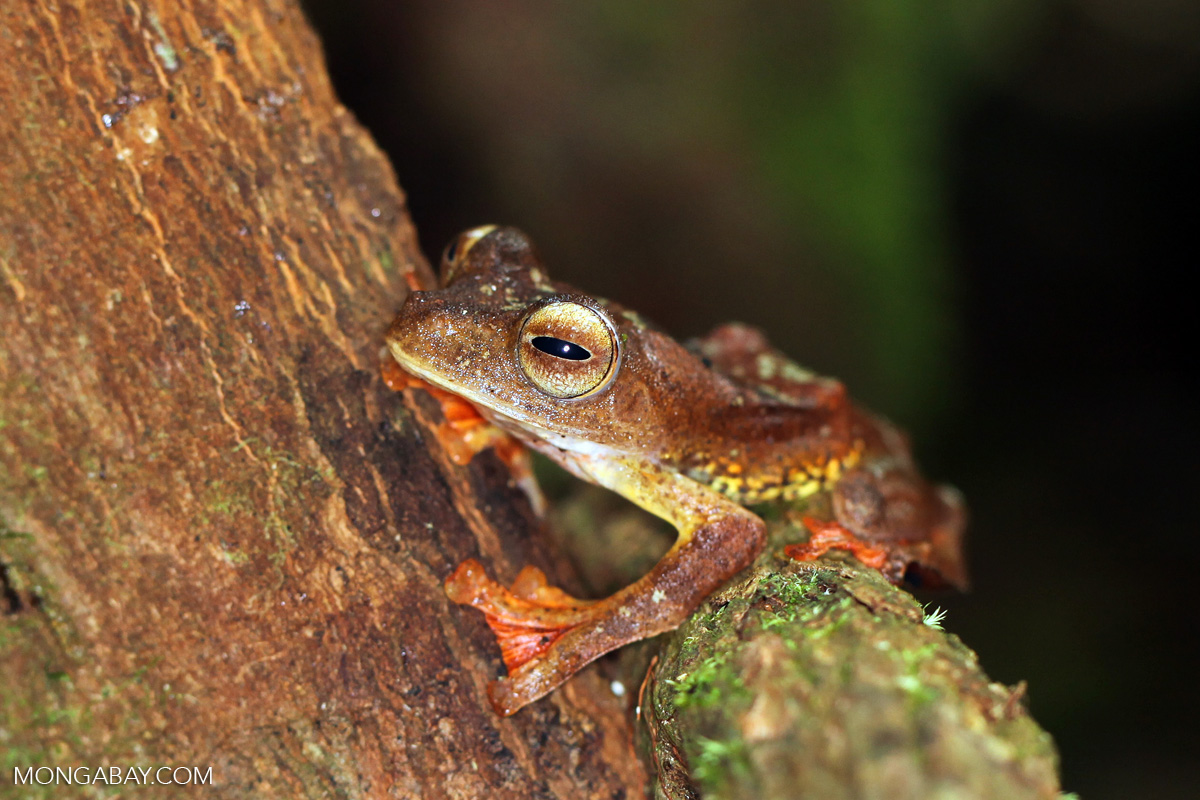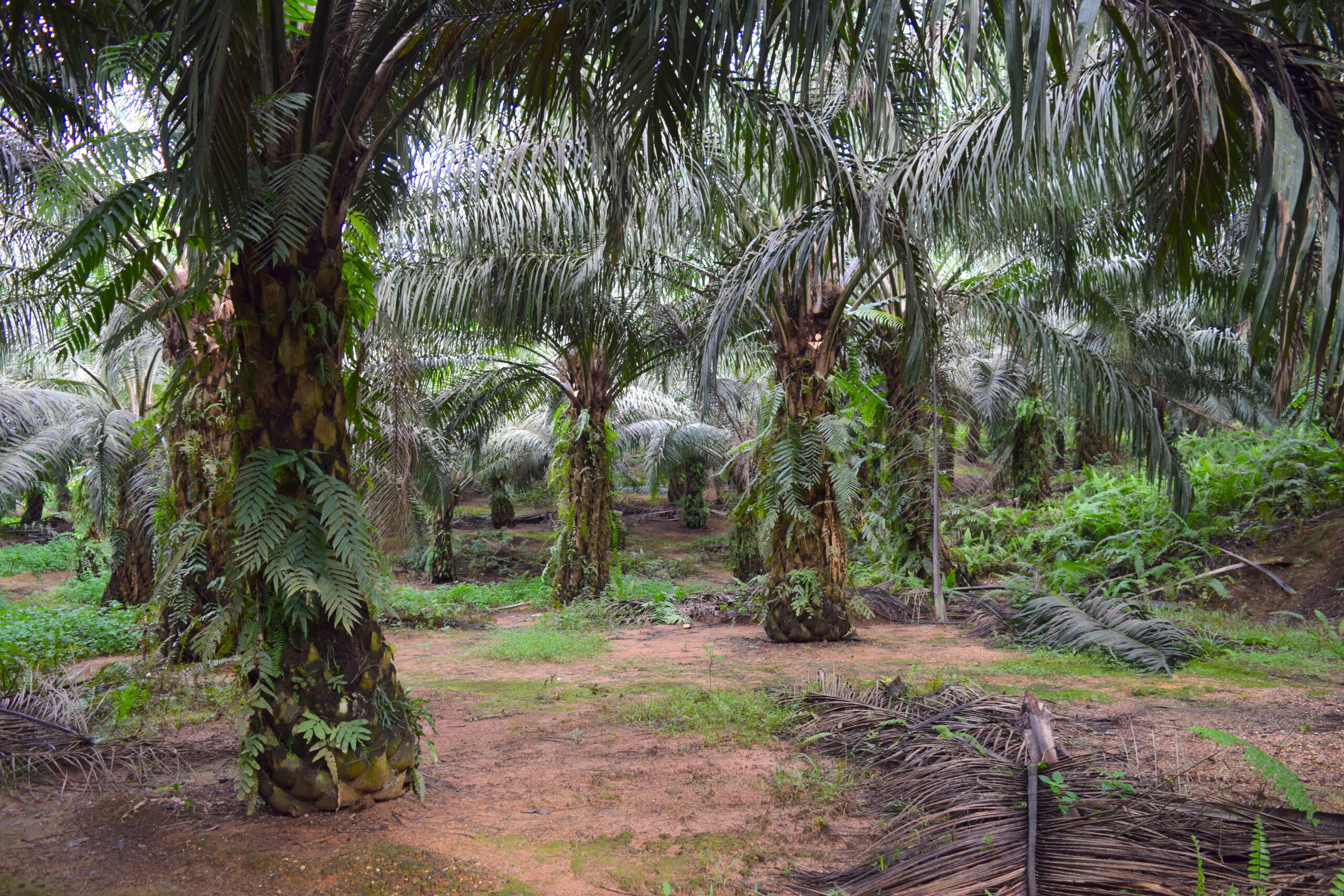- Tropical forest researchers are increasingly using bioacoustics to record and analyze ecosystem soundscapes, the sounds that animals make, which in turn can be used as a proxy for forest health.
- Researchers studying soundscapes in logged rainforests in Indonesian Borneo have tested a novel approach that could provide a reliable and low-cost way for conservation agencies and communities to monitor tropical forest health.
- Their new method, which partitions animal groups into broad acoustic frequency classes, offers a stop-gap method for measuring acoustic activity that could be used in the short-term until more detailed artificial intelligence and machine-learning technology is developed.
- During their study, they found that animal sounds diminished and became asynchronous in forests disturbed by selective logging, factors that could be used as proxies for disturbed habitats.
Tropical forests awaken the senses. The scent of moist earth, the feel of sticky, humid air, and the sight of an array of colorful life-forms are visceral delights. But perhaps the most striking sensory element is the sound. A more or less continual cacophony of animal calls and songs resonates beneath the leafy canopy — from birds that trill, warble and honk, to mammals, insects and amphibians that howl, chirp and croak.
Forest scientists are increasingly recording and analyzing these animal noises, collectively known as the forest “soundscape,” as a way of monitoring biodiversity for conservation. By looking at the complexity of the animal assemblages that make sounds, researchers can get a sense of the health of the overall forest ecosystem.
In temperate and boreal parts of the world, methods for analyzing and interpreting the hundreds of hours of recordings and terabytes of acoustic data from such surveys are well developed. It’s possible, for instance, to use artificial intelligence via a mobile phone app to identify calling birds in the forests of Europe and North America. Such technology can allow researchers to study the distribution of multiple species on vast scales and over long periods of time.
However, technology lags behind in the tropics, where soundscapes are incredibly complex and there’s relatively little information on the sounds of species. A particular bottleneck in tropical soundscape research is the lack of reference databases of tropical forest species, according to Zuzana Burivalova, a tropical forest ecologist at the University of Wisconsin–Madison.

“People say that using machine learning we will be able to recognize all species [from their acoustic signature], it’ll just take another year or two,” Burivalova told Mongabay. “But I know that in tropical forests, it’s not going to be one or two years. Technology is improving, but it will take a long time because we don’t even have descriptions or recordings of so many species … for perfect machine-learning algorithms [in the tropics], I think it’s going to take more like 20 years.”
Eager to find a reliable way to monitor tropical acoustic communities in the short term, Burivalova and her colleagues tested out a novel approach that differs slightly from prior soundscape studies that rely on either mathematical indices or direct identification of individual species.
Their new method, which divides animal groups according to the frequency range of their calls, could be a valuable stop-gap method by which forest managers and conservationists can rapidly and inexpensively measure tropical forest health while technology and acoustic reference libraries catch up, the research team report in a study published in Science of the Total Environment.
“We tried to divide the soundscape into major groups like birds, insects and mammals and frogs … groups that conservation agencies are generally interested in,” Burivalova said. Mammals, for instance, which call in the lower range of the frequency spectrum, comprised one distinct category, whereas insects, which make higher-pitched noises, formed another category.

Soundscape patterns indicate forest health
Applying the approach in East Kalimantan province in Indonesian Borneo between 2016 and 2017 revealed that animals emitted less sound at dusk and dawn in logged forests, characterized by fewer acoustic “peaks.” Furthermore, they found that the pattern of bird calls was typically less routine in heavily disturbed forest areas.
These acoustic “fingerprints” of the soundscape could be used as indicators of the overall health of forest patches, Burivalova said, and serve as a snapshot that can be used to gauge health trends over time. The method could be especially useful where resources are limited and wildlife experts are unavailable to measure how effective conservation strategies, such as forest certification or community-based forest management, have been at achieving the objectives they set out to realize.
“I see this as a method that could potentially be really useful as a quick [preliminary] test, to have a first look at what the soundscape is like and how it is changing without going into the individual species, which takes a lot of work in the tropics,” Burivalova said. “For example, if [you’re] a conservation NGO and you’re monitoring how disturbed a forest that you’re managing has become due to things like fire, or even how it’s recovering while it’s being restored, you could use this as a rough measure of how many birds or insects are there, and whether that is increasing or decreasing.”
The method is still in the early stages of development — the team had trouble distinguishing the sounds of some mammals from amphibians, for instance. But it’s a promising step forward in untangling the complex tangle of sounds in tropical rainforests, Burivalova said. Her team is now working on algorithms to detect the sounds of human activity, such as chainsaws, vehicles and even gunshots, and also testing out the method in other locations around the world, including Gabon, Mexico and Sierra Leone.

Focus on where change is possible
The quest to understand more about the ecology of animal sounds is vital, according to Almo Farina, an honorary professor of ecology at the University of Urbino in Italy, who was not involved in the study. Acoustic communication plays a crucial role in shaping animal communities, so any advance in the methods of interpreting sounds is good news, he said, adding that the authors of the Borneo study have “rigorously” applied a sensible approach.
“Sounds can be used as a proxy for many ecological processes like environmental deterioration or recovery … the ecoacoustic community could produce a good proxy for the quality of the environment,” Farina told Mongabay. He nonetheless cautioned against directly correlating the soundscape with biodiversity, given the number of species that don’t make sounds and the complexity of interpreting tropical soundscapes in which many species, such as frogs, insects and even birds use very narrow frequency ranges.
“In a very high sonic environment like in Borneo, where you could have 40 frog species calling together and an incredible number of insects, species have evolved to reduce the frequency range of their calls in order to understand each other,” Farina told Mongabay. “Otherwise, there would be masking and competition, and their communication [wouldn’t be] efficient.”
Farina said that as technology to record and interpret soundscapes improves, he would like to see more work focused on human-disturbed and “common” environments where we have the opportunity to improve the quality of the environment for nature.
Banner image: Study co-author Purnomo deploys a soundscape recorder in the forests of Borneo. Image courtesy of Zuzana Burivalova.
Citation:
Burivalova, Z., Maeda, T. M., Purnomo, Rayadin, Y., Boucher, T., Choksi, P., … Game, E. T. (2022). Loss of temporal structure of tropical soundscapes with intensifying land use in Borneo. Science of the Total Environment, 852. doi: 10.1016/j.scitotenv.2022.158268
Carolyn Cowan is a staff writer for Mongabay. Follow her on Twitter @CarolynCowan11
Related audio from Mongabay’s podcast: A recent $24 million endowment will expand bioacoustics research and technology around the world, toward making a huge impact on conservation, listen here:
View more bioacoustics coverage:
https://news.mongabay.com/2019/08/audio-the-superb-lyrebirds-song-and-dance-and-incredible-vocal-mimicry/
FEEDBACK: Use this form to send a message to the author of this post. If you want to post a public comment, you can do that at the bottom of the page.
